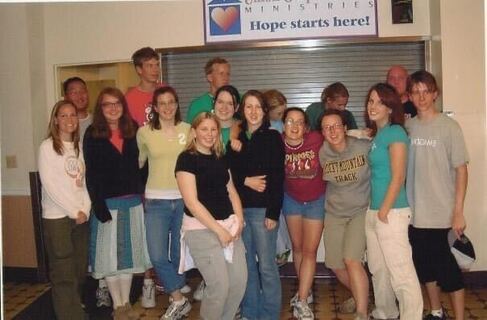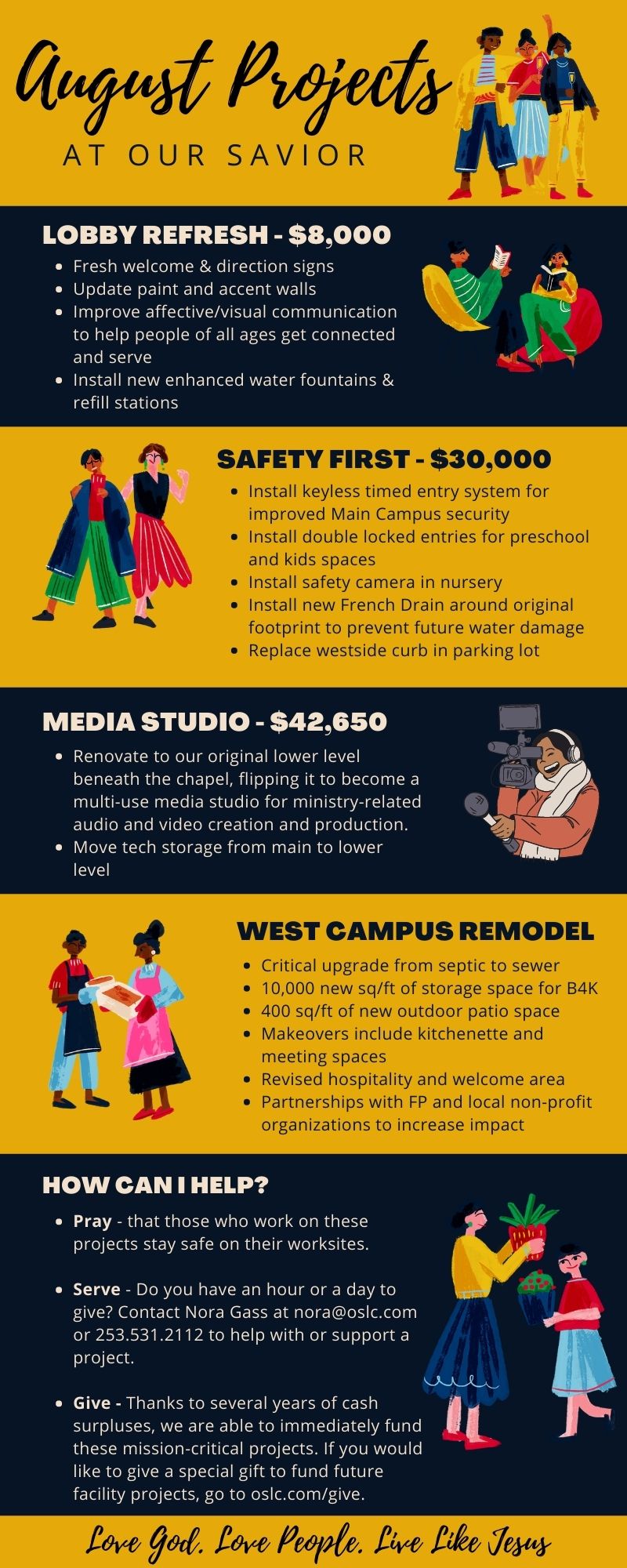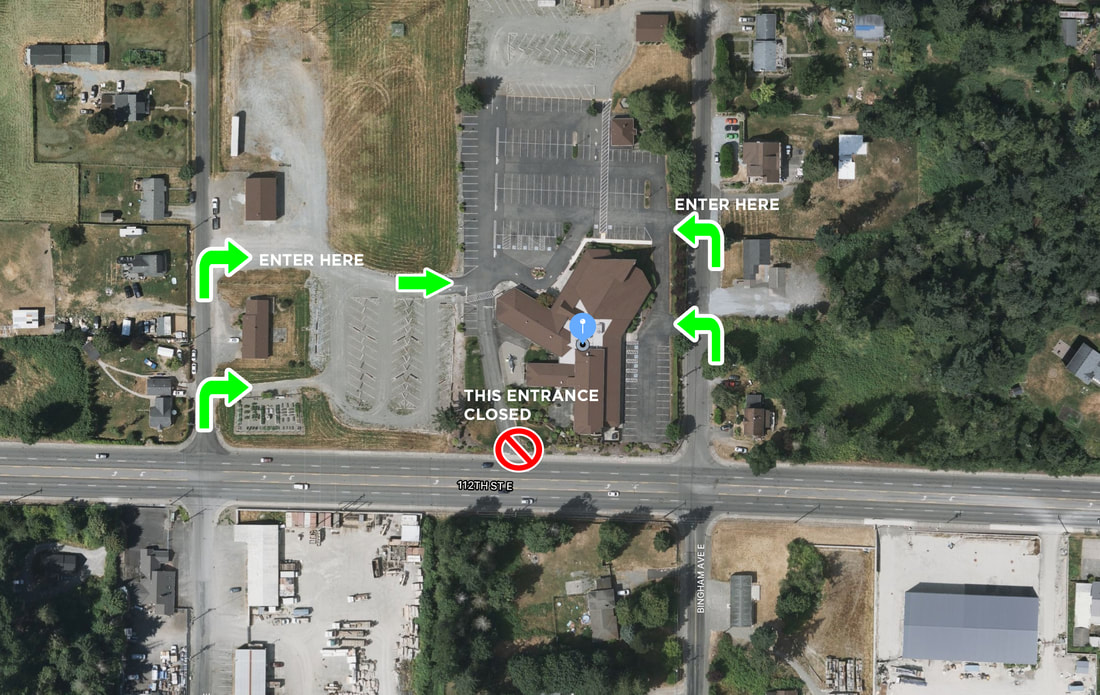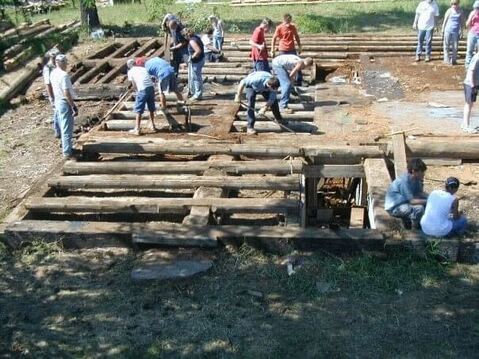|
God is up to something in the lives of everyday families right here at Our Savior.
But don’t take my word for it… check it out for yourself! Have you ever heard that following Jesus is a marathon, not a sprint? I used to believe that it was true. . . until I recently read the gospels. Perhaps our “go-go-go” to follow Jesus vibe is more culturally satisfying than it is Biblically faithful. Here are three observations that may help us return to Jesus’ way of rest and work. One is biblical. Another is physical. The other is practical. First, throughout the gospels, we see that Jesus rests.
Second, rest is necessary for a whole, healthy life.
Finally, rest is not checking out, but staying engaged in order to work. Rest doesn’t mean we stay home and nothing happens. It’s not lethargy, recuperation, or a time when we focus on ourselves. No. Rest is active work - but in a different way. It’s active work of doing no work on our own, but letting God do the work for us.
This is the active “work” of resting in Jesus between sprints of worship, serving, loving, working, caring, and living. When we actively engage in rest, we choose to place God in His rightful place and remind ourselves of ours. When we actively engage in rest, we choose to place God in His rightful place and remind us of ours." Throughout the month of August, our Sunday Morning Kids Connect has chosen to rest in order to relaunch and bear fruit again starting September 11th. Our leaders are better for it. Our kids grow through it. Our church is strengthened by it. And our neighbors, community, and world are blessed by it. Every August, our Facilities Team tackles a handful of projects to maintain and improve our facilities. These projects are planned and positions our greatest physical asset (our buildings) to best support ongoing ministry as we move into the program year. Click here to download a complete list of August Projects. This year, we will focus on three primary projects. Safety First - This project will focus on Main Campus security for preschool and kids spaces, safety for seniors, and mitigating future water damage in the Lower Level. Refresh the Lobby and Fellowship Hall - This project will update and improve the overall aesthetic experience of our common areas. Complete Lower Level Remodel - This project will flip our original lower level to become a multi-use media studio for ministry-related audio and video creation and production. Tech storage will move from the main level to the lower level. Additionally, this move will open a 2nd floor classroom for ministry groups to use throughout the week and for kids to use on Sunday morning. Want to Help?
Beginning THIS Monday, August 1, the 112th St E entrance to our campus will be closed while we install a French drain around the original footprint (current chapel). Construction is expected to last about two weeks.
During this time, please plan to use the Bingham or 44th Ave E entrances. Worship services and programming will continue and we do not expect any interruptions to regularly scheduled ministry during this time. Thank you for your patience and understanding as we perform this critical project for long-term preventative facility care. Pastor Tim 
From 2005-2007, I had the opportunity to lead the Institute for Servant Leadership. High school and college students from all over the Pacific Northwest gathered for a week of early summer service projects, team building, and leadership formation and a week of late summer regional service projects and celebration. They gathered again for an immersive international cultural and serving experience the week between Christmas and New Years. Each week also included outdoor adventures, life-on-life community and relationship building, and real-time faith formation.
We experienced Simple, Significant Service + Awesome Adventure + Life-Long Relationship + Life-Changing Faith bearing fruit… lasting fruit. Today, these students continue to serve and lead in businesses, schools, clinics, churches, and communities all over the world. Thanks to social media, they have stayed in touch with each other over the years and point back to these experiences as being some of the most life-changing, career-orienting, direction-affirming, Jesus-centering moments of their lives.
We certainly learned a lot. Changes were made to the program to make it more accessible to churches and youth groups to experience the same kind of faith and life transformation.
In 2007, Idaho Servant Adventures began to gather youth and their friends, churches, and significant adults from around the nation to serve together, experience the adventure that resides in the North Idaho Panhandle National Forest, find friends, deepen relationships, and experience real-time connections between faith and real life.
Going into its 15th summer, Idaho Servant Adventures has gathered 6,750 youth and adults who have served over 108,000 hours.
But, don’t take my word for it. Check out this video to learn more. And then, continue scrolling for an easy way to plan your own Servant Adventure - right where you are.
Can’t make it to Idaho? You can plan a servant adventure in your neighborhood, school, or community.
And… if a Servant Adventure sounds a lot like Faith in Action - you’re right! It is Faith in Action with designated team roles and a few fun twists. Download this one-page PDF resource that will help you plan your Servant Adventure for you and a team of your friends. I can’t wait to hear all about it!
 Baptism. Father’s Day. Juneteenth. Those are three different experiences. And, I believe Jesus celebrates each of them. What are they? If you’re reading this, I’m guessing you might already know a little bit about baptism. Baptism is an ongoing God-given celebration experienced in a human way. It’s a celebration of a faith relationship with Jesus. And, because of that faith relationship, we are totally forgiven, adopted into a greater family, and invited to participate in God’s work in the lives of other people and our world. Yes, baptism is a single event, too… but a baptismal lifestyle (or as we say, a life on mission) is something we live out in our thoughts, words, and actions which strive to look and sound more like Jesus, everyday. If you’ve grown up in the United States, you might have celebrated Father’s Day at least once in your life. Father’s Day is an annual human celebration for the God-given gift of fathers. It began in Spokane, Washington. That’s right… Spokane. Sonora Smart Dodd felt strongly that fathers needed to be honored and recognized for their roles in their families and society. According to Wikipedia, “she approached the Spokane Ministerial Alliance and suggested her own father's birthday, of June 5, as the day of honor for fathers. The Alliance chose the third Sunday in June instead… So, the first Father's Day was celebrated June 19, 1910, in Spokane”. You may have heard about Juneteenth… but you may have never celebrated it. Juneteenth is an annual human celebration for the God-given gift of freedom. It commemorates the end of slavery in the United States after the Civil War. According to the New York Times, it has been celebrated by African Americans since the late 1800s. In 2020, it became a federal holiday. Also known as “Juneteenth Independence Day”, “Freedom Day” and “Emancipation Day”, every June 19th, we remember the day in 1865 that General Granger announced freedom through the Emancipation Proclamation of 1863 which released enslaved African Americans. I’m reminded of 2 Corinthians 3:17 which says, “Now the Lord is the Spirit, and where the Spirit of the Lord is, there is freedom”. Indeed, “it is for freedom that Christ has set us free. Stand firm, then, and do not let yourselves be burdened again by a yoke of slavery” (Galatians 5:1). Baptism - an ongoing God-given celebration experienced in a human way. Father’s Day - an annual human celebration for the God-given gift of fathers. Juneteenth - an annual human celebration for the God-given gift of freedom. Three distinct celebrations. One weekend. And I believe Jesus is celebrating all three. So, this Sunday, we will celebrate them with Jesus. Here’s what Sunday will look like both onsite and online…
When Jesus is our foundation and at the center of all we do, even three unlikely celebrations can come together to love God, love people, and live like Jesus. Why? Because God created and gave us all things (Colossians 1:16) - baptism, fathers, and freedom. And it’s always good to celebrate God’s good gifts for our enjoyment and to love and bless our neighbors  You may have noticed that this year’s high school and college graduates may see and live life a little differently than some of us “older” people do. By the way, that’s really strange for me to write because while I’m only 22 years removed from my high school days, my sister in-law and I recently realized the sobering fact that we are now closer to retirement than high school. I digress. I think we would all agree that every generation (including our own) is shaped a little differently through our experiences. For example, while I remember some of the pre-911 days, my siblings do not know of a time when the word “terrorists” hasn’t been associated with school safety. Sad, yet this reality has shaped how we all think of security, safety, and what is acceptable or not. It also determines what we inherently value which in turn shapes how we live our lives. Of course, the stories surrounding our younger generations that run the headlines are often telling the narrative of radical extremes. We may use words like, “entitled” and “snowflake”. Yet, the mushy middle majority of this up and coming generation - this year’s high school and college graduates - give us incredible hope. We would probably say that every “next” generation does. That’s why I’m writing this post. In a conflicted, chaotic, and confused world, we need a generation of people like our graduating students to serve, work, learn, and lead with the gospel in fresh, creative, and innovative ways. I’m not talking about “professional” church work, either. I’m talking about the fact that while this year’s graduates may volunteer in their community and church, most of their relationships, transformation, and impact will be in their workplaces, homes, and neighborhoods. Why? Because the gospel which transforms all of life is active everywhere. So, to better appreciate this year’s graduating students, I want to share with you Marist’s Mindset List for the Class of 2025. They haven’t released the list for the Class of 2026 yet, but will post a link here when it is released. You can access the list here. This list of general mindsets, attitudes, and trends among high school and college students will help us understand how God might be using them (and all of us!) right now and into the future to shape and reshape our lives and world. I mean, fast forward 25 years from now… how will politics look different? (I sure hope they will!). How will economics change? How will public education look radically different than it does today? How will social systems improve to help and serve more people? And if the gospel fire of the Holy Spirit lives in the hearts of this generation, then God is at work in all of these areas - and more! And wherever the Spirit is at work, there is change. It’s just what Jesus’ Spirit does. That’s why I can’t wait to see how this year’s graduates will be the presence and power of Jesus that shapes and re-shapes our lives and world. And to be honest, it’s not just graduates who do this… each of us are called as part of God’s Oikos (extended family) to do the same. How does your relationship with Jesus change the way you live at home, work, school, or in your social circles? Drop a note and share a story with me about it! Pastor Tim |
Connect with
Pastor Tim Meet Pastor TimTim Bayer has served as Our Savior's Lead Pastor since September 2019. He also serves as an Adjunct Instructor at Concordia University - Irvine, a National Leadership Facilitator and Resource, and with the Northwest District of the Lutheran Church - Missouri Synod. Archives
April 2025
Categories
All
|
OUR CHURCH
|
GET INVOLVED
|
OUR SCHOOLS
|
|
|
© 2025 | Our Savior Lutheran Church | 253.531.2112
4519 112th St E, Tacoma, WA 98446 Office Hours: Mon-Fri 8:30-3:00 Sunday Services: 9:00 & 10:30am |











 RSS Feed
RSS Feed